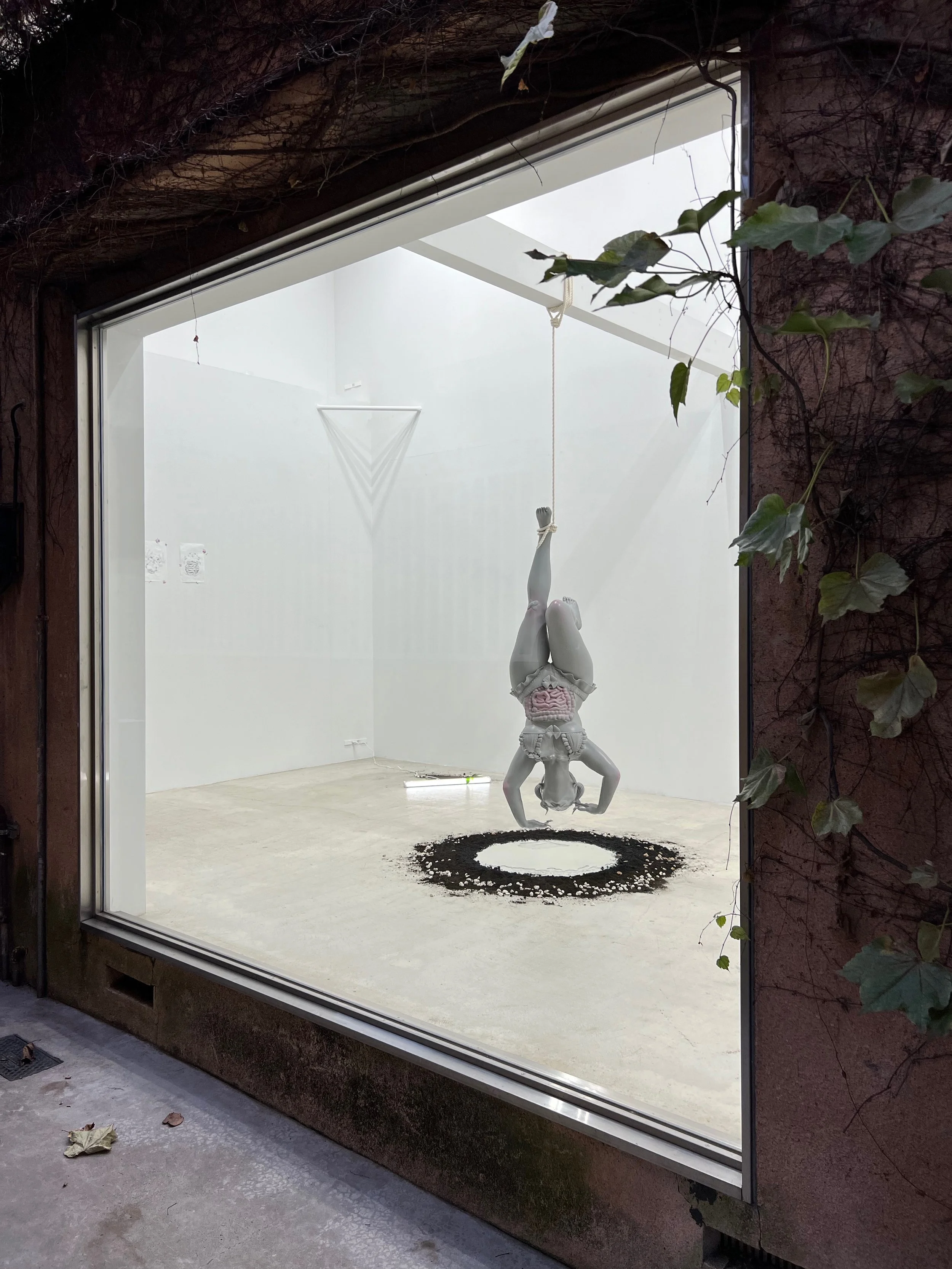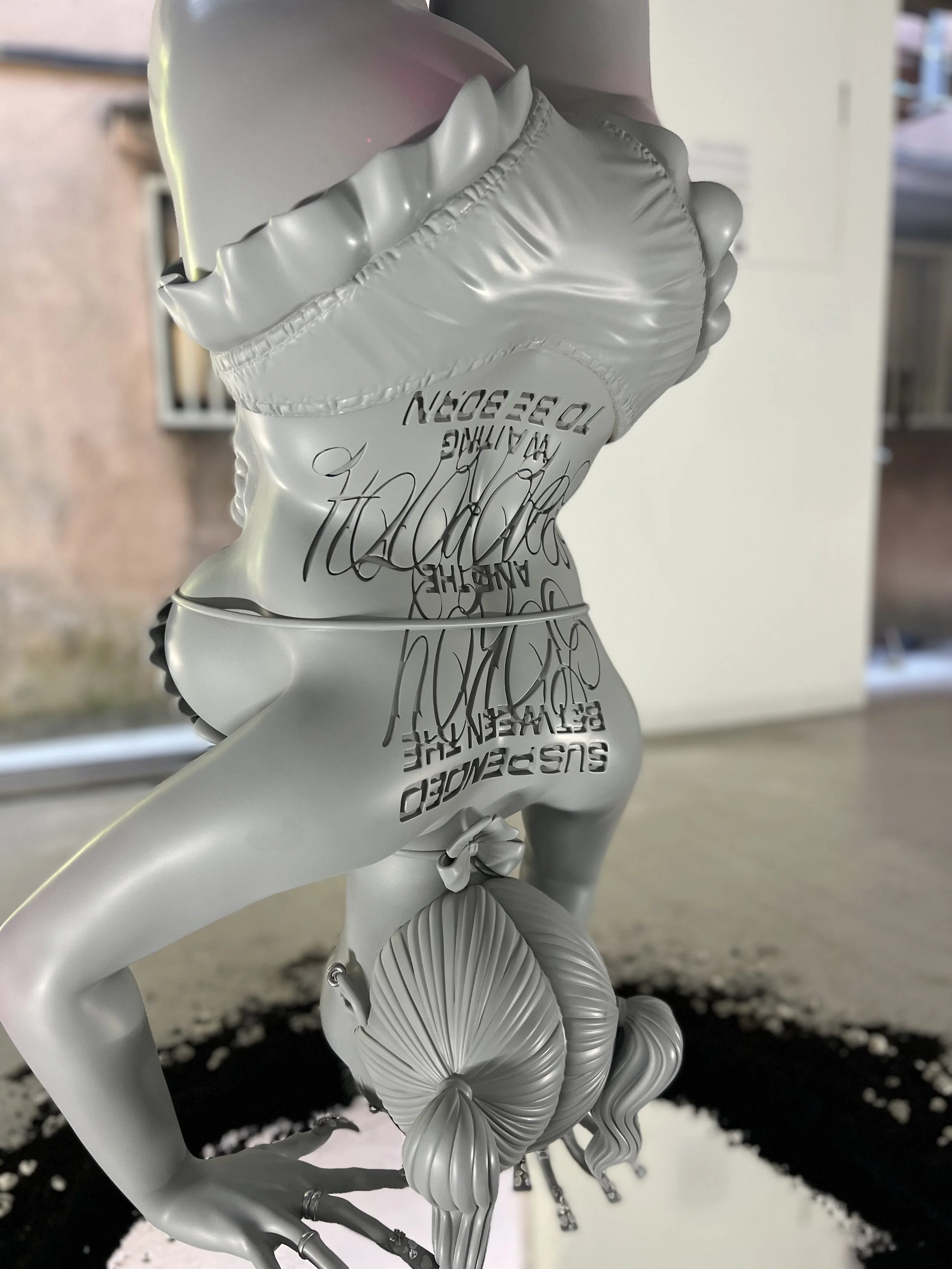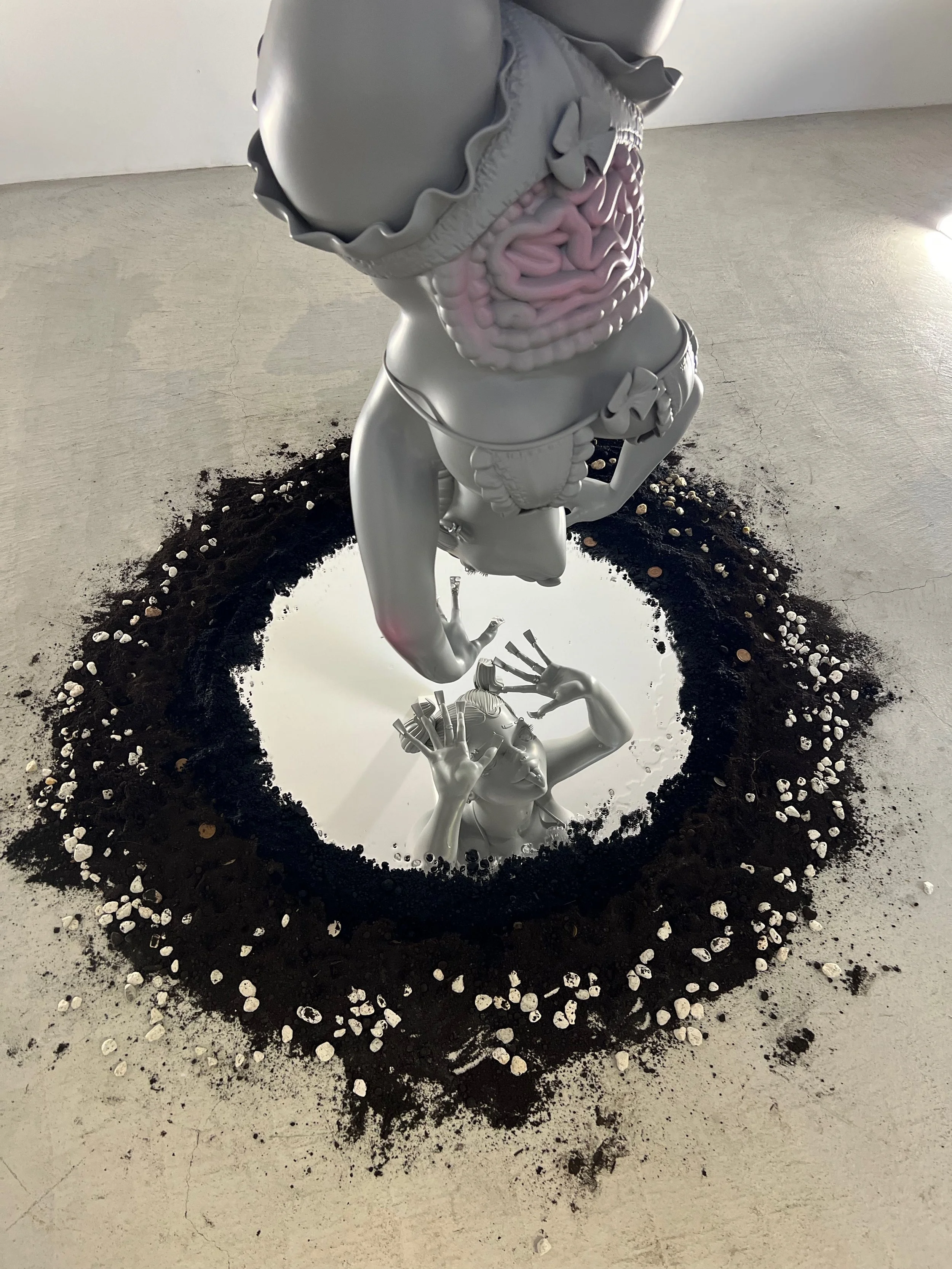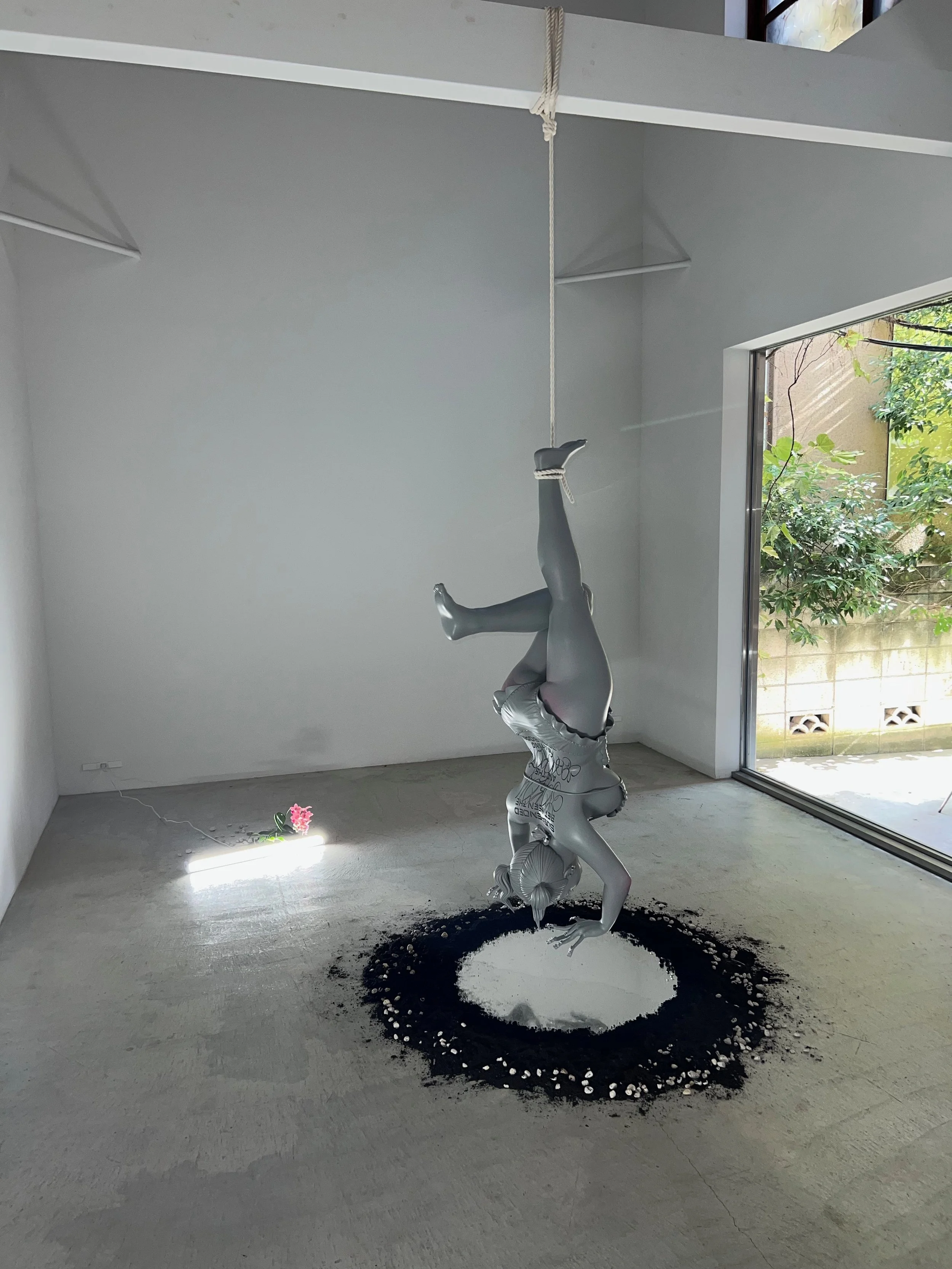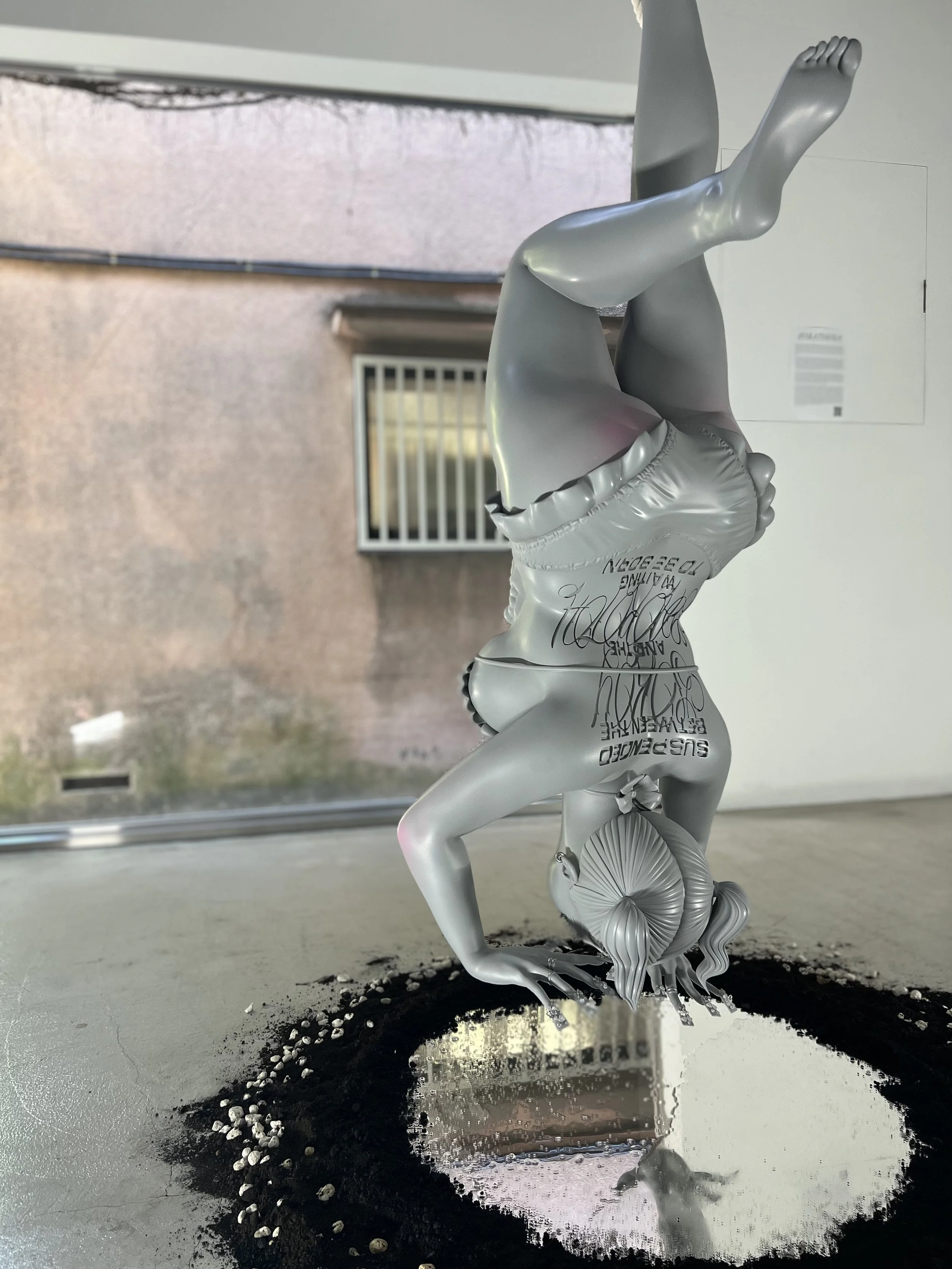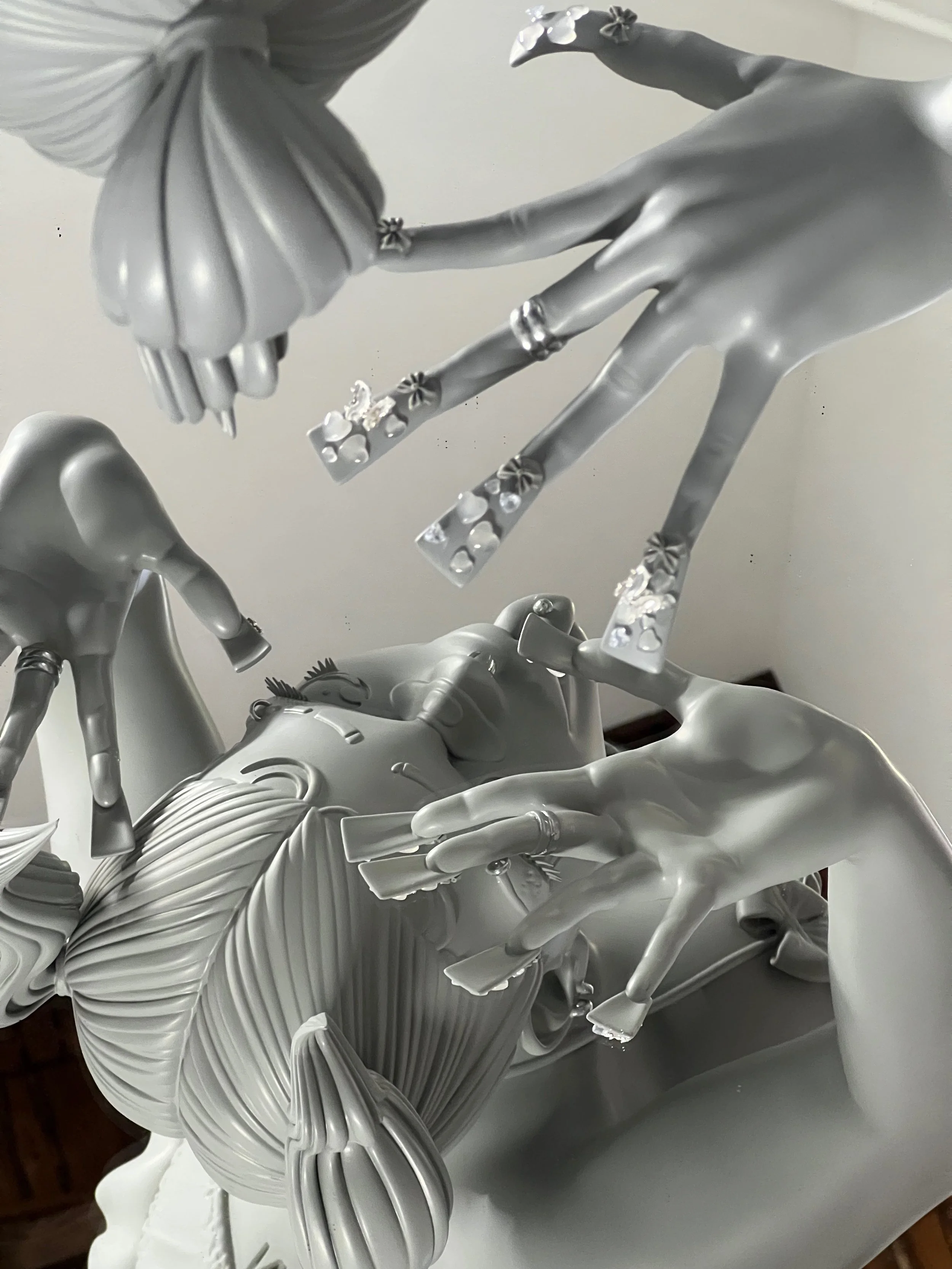“Moratorium” at Domicile, Tokyo.
“MORATORIUM” Solo exhibition at Domicile, Tokyo
The blood rushes to my head, puddling in latent spaces, behind eye sockets, filling nose cavities, swelling under the weight of inverted consequence. The center continues to unravel, experience mul- tiples itself, infinite times infinite, before becoming divided about what it would mean to stay, to hang, suspended. You wouldn’t believe me if I told you, I chose this. Interiority gutted with a fresh set of acrylic tipped nails, unbeknownst to pain, I purge to release. This chrysalis is neither tomb nor a la- tent promise of wings, it is going home - deep home, milky memories, nubile innocence, vibrational peace.
We look upon the inverted, tender body of Manuela Soto Sosa’s latest creation, Moratorium, initially with lustful pity. Indulgently our eyes linger on the fullness of thighs, the lacy frills of her panties, the bows on her bra just above her splayed guts, the words carved into the canvas of her back, trying to decipher if we are beholding sin or an act of faith, sacrifice or autofiction. The large scale, 3D printed sculpture appears familiar to us as Soto has tattooed this figure countless times throughout her prac- tice but taken outside the context of skin, the work becomes both surreal and introspective. In what is Soto’s first solo show in Tokyo hosted by Domicile, we are invited to suspend – disbelief, time, ourselves as she introduces the next chapter of her work.
Domicile (n.) a country that a person treats as their home or has substantial connection with. As the name of the venue of the exhibition feels like a fabled homecoming as Soto begins to construct a world that she can come home to. Her practice has long since been about building bridges between extremes as is the ethos of her aesthetic, straddling the negative spaces between cultural heritage and hyperreality, tattoo and therapy, and innocence and manipulation. Soto’s work hasn’t always been readily accepted by either the art or tattoo industries as a result and has come to define belonging as a matter of assimilation in opposition to her cataclysmic proclivities.
Soto has long-since enabled her audience to see themselves the way she sees them, with pouting innocence, anime-inspired characteristics, and insolent sex-appeal, by creating “self-portraits” that they would wear forever on their skin - visual reminders of self-actualized armor. Through these de- pictions, the Soto girls themselves were 2-D talismans for unwavering strength whose personhood was both tainted by shadow but ultimately resplendent. Yet in giving birth to these caricatures of affirmations, Soto would watch her girls walk out the door, hardly laying eyes on them again except via the occasional tag on Instagram. Soto’s oeuvre was never truly her own and after spending the latter half of the year offline, she reemerges with the intention to build a world that she can actively share with her creations. Through installation Soto reclaims her works existence as her own the same way she helped her audience to reclaim their bodies and heal. Here, she has the courage to realize her own self-portrait through a new medium, it is Soto that hangs for us all to witness. Only she can find serenity as gravity pulls her under from the top down.
– Written by Lindsey Okubo

